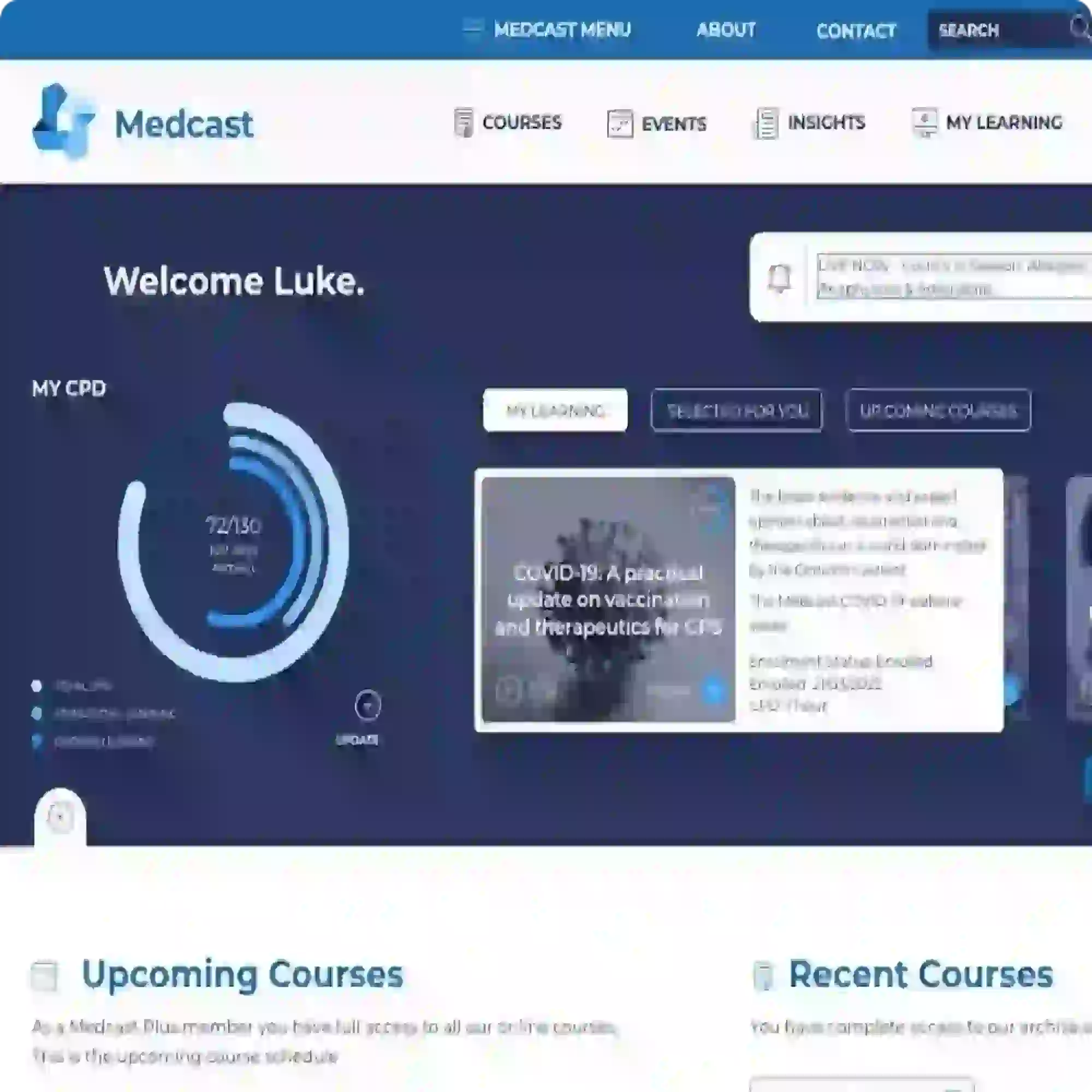Parkinson's disease - clinical fact sheet and MCQ
Overview
Parkinson's disease (PD) is a progressive neurodegenerative disorder characterised by both motor and non-motor symptoms. Its prevalence increases with age, making it a common condition encountered in Australian general practice.1
Diagnosis
Early recognition of PD facilitates optimal management. Patients may present with classic motor symptoms such as unilateral rest tremor, bradykinesia, rigidity, and postural instability.1,2 However, non-motor symptoms—including constipation, anosmia, rapid eye movement sleep behaviour disorder, and urinary urgency—often precede motor manifestations and should raise clinical suspicion.1
Parkinson’s disease may be diagnosed by the presence of bradykinesia, plus one of:2
-
muscular rigidity
-
slow rest tremor
-
postural instability not attributable to another dysfunction
It's important to differentiate PD from other conditions. Red flags suggesting alternative diagnoses include:1
-
tremor that is absent at rest but present with posture or use of the hands (consider essential or dystonic tremor)
-
early recurrent falls (consider progressive supranuclear palsy)
-
severe orthostatic hypotension (>30mmHg decrease in blood pressure) (consider multiple system atrophy)
-
early cognitive impairment (consider normal pressure hydrocephalus or progressive supranuclear palsy)
-
lack of response to levodopa (consider progressive supranuclear palsy or multiple system atrophy)
-
bilateral and symmetrical Parkinsonism (consider medication-induced Parkinsonism, especially if dopamine-blocking drugs such as prochlorperazine, metoclopramide, antipsychotic medications, have been introduced recently or patient has been exposed for extended periods)
Note that this is not an extensive list of PD mimics or red flags. A thorough history and neurological examination are essential, as PD remains a clinical diagnosis.
Management
-
Pharmacological treatment
-
Levodopa, which is converted into dopamine by the enzyme dopa-decarboxylase (DDC), remains the most effective treatment for motor symptoms1 and is associated with the fewest adverse effects, particularly in patients >70 years2
-
Levodopa may be combined with dopa-decarboxylase inhibitors (carbidopa or benserazide) to enhance central nervous system bioavailability by reducing conversion in the periphery.1Dopamine agonists (contraindicated in those with a history of impulse control disorder), which act directly on dopamine receptors to mimic dopamine’s effects, and monoamine oxidase B inhibitors, can be considered, particularly in mild cases; these are effective and well-tolerated alternatives1
-
Amantadine or anticholinergics may be useful alternatives or adjuncts if levodopa is inadequate at controlling tremor; initiation by a specialist is recommended2
Regular assessment and monitoring of non-motor symptoms enable the clinician to support the implementation of effective interventions.
-
Non-pharmacological interventions
Multidisciplinary care is vital. Consider initiating non-pharmacological intervention during early-stage disease where practical.1
-
Physiotherapy can be tailored to the patient’s specific motor challenges2,3
-
Occupational therapy assists with daily living activities, such as handwriting3
-
Speech therapy addresses speech disorders and dysphagia3
Regular assessment and monitoring of non-motor symptoms enable the clinician to support the implementation of effective interventions.
General practitioners are often at the forefront of management for PD, both for undiagnosed patients with early symptoms and those with a known diagnosis seeking ongoing care. Though support from a neurologist is recommended where appropriate, GPs are well-positioned to improve quality of life for patients living with PD by adopting a holistic and proactive approach.
Claim your CPD
After reading the clinical summary above and reviewing the references, complete the quiz to gain 30 minutes of EA CPD and 30 minutes of RP CPD.
You can either self-report FastTrack CPD to your CPD home, or Medcast will track your learning via your personal CPD Tracker and you can download and report these points once a year. See our CPD Tracker FAQ.
Quiz
Answer the following four (4) questions and review the answers to complete this learning activity.
References
-
Waller S, Williams L, Morales-Briceño H, Fung VSC. The initial diagnosis and management of Parkinson’s disease. AJGP 2021; 50(11):793-800.
-
Therapeutic Guidelines. Parkinson disease. 2018. https://app.tg.org.au/viewTopic?topicfile=parkinson-disease. (last viewed Dec 2024).
-
Höglinger, G, German Parkinson’s Guidelines Committee & Trenkwalder, C. Diagnosis and treatment of Parkinson´s disease (guideline of the German Society for Neurology). Neurol Res Pract 2024; 6, 30. https://doi.org/10.1186/s42466-024-00325-4
-
Zuzuárregui JRP, During EH. Sleep Issues in Parkinson's Disease and Their Management. Neurotherapeutics 2020; 17(4):1480-1494. https://doi.org/10.1007/s13311-020-00938-y.
The Medcast medical education team is a group of highly experienced, practicing GPs, health professionals and medical writers.
Become a member and get unlimited access to 100s of hours of premium education.
Learn moreA chalazion is a painless, chronic eyelid swelling caused by a blocked meibomian gland, leading to granulomatous inflammation. It can persist for weeks to months and is more common in adults. Risk factors include blepharitis, ocular rosacea, and seborrhoeic dermatitis. This FastTrack-CPD provides a clinical summary on the management of chalazion with a quiz to apply your learning and receive CPD (RP and EA categories).
Acne is a chronic inflammatory condition of the pilosebaceous unit, triggered by androgen sensitivity rather than elevated levels. It commonly affects adolescents and young adults, with males experiencing more severe cases. Beyond skin symptoms, acne can impact mental health, requiring consideration of emotional and social effects in patient management. This FastTrack-CPD provides a clinical summary on the management of acne with a quiz to apply your learning and receive CPD (RP and EA categories).
Enuresis, commonly referred to as bedwetting, is the involuntary release of urine during sleep in children over 5 years of age. ‘Enuresis’ is reserved for nighttime wetting, while daytime wetting is classified separately as urinary incontinence. In this FastTrack CPD, use the cheat sheet to help Ethan, a 7-year-old boy, with frequent bedwetting that is causing concern.
